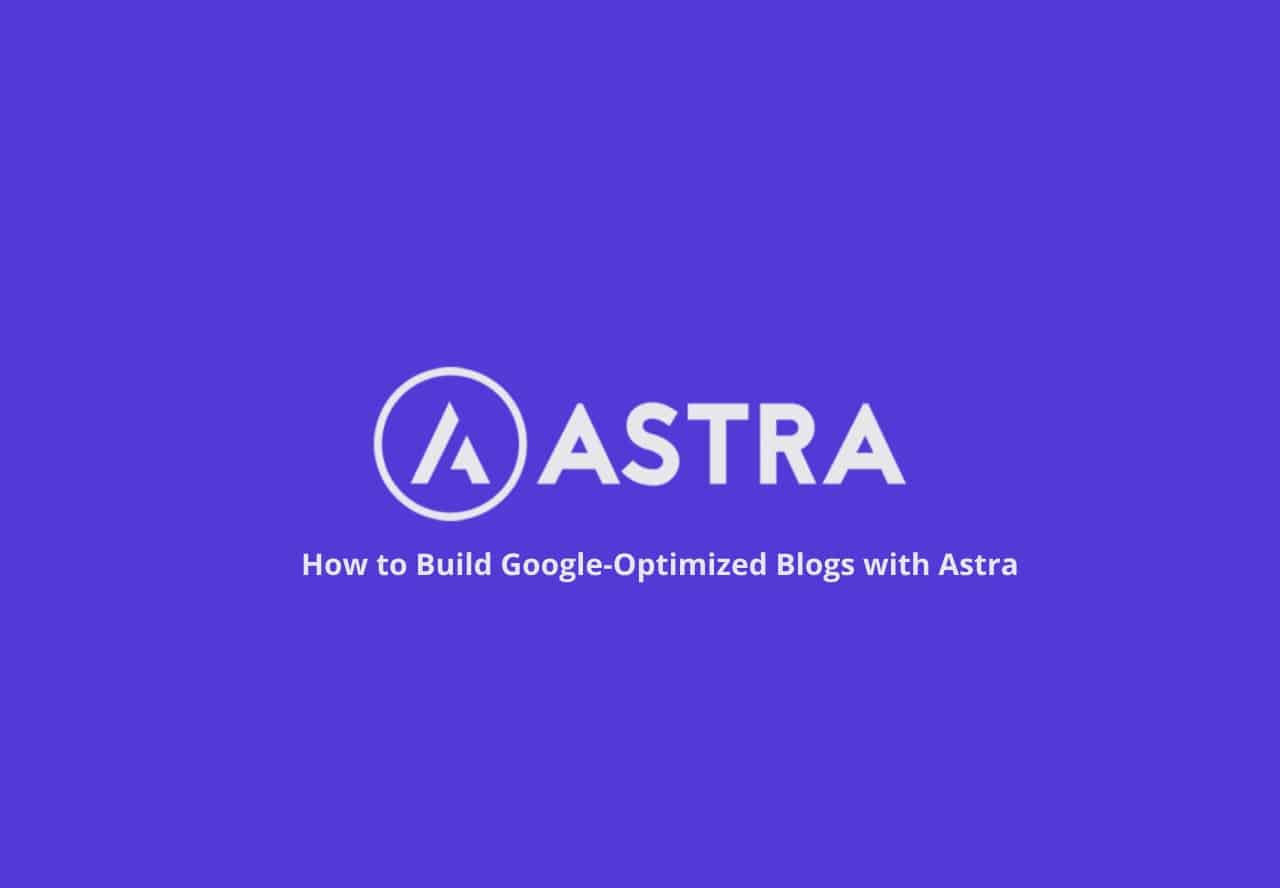In today’s digital world, standing out on Google’s search results can make or break your blog’s success. Bloggers and businesses that prioritize Google optimization not only reach bigger audiences but also offer faster, more usable websites that keep readers coming back.
This comprehensive guide will show you—step by step—how to use the versatile Astra theme to build a blog that’s both lightning-fast and search-engine friendly.
Why Google Optimization Matters for Blogs
- Better Rankings: Google’s algorithm favors blogs that load quickly, are mobile-friendly, and offer relevant, structured content.
- More Traffic: High-performing blogs consistently attract more organic visitors.
- Improved User Experience: SEO isn’t just about search engines; it’s about creating a seamless experience for every reader.
Quick Overview of Astra Theme Features
Astra is one of the most popular WordPress themes for its:
- Super-fast performance (less than 50KB frontend size)
- Seamless compatibility with major page builders (Elementor, Gutenberg)
- Built-in schema markup for enhanced search appearance
- Mobile-first, responsive design
- Easy customization for colors, typography, headers, and layouts
Step 1: Install Astra and Essential Plugins
How to Install Astra
- In your WordPress dashboard, go to Appearance → Themes → Add New.
- Search for “Astra” and click Install and Activate.
Recommended SEO and Speed Plugins
- SEO Plugins: Yoast SEO, Rank Math (for on-page optimization, sitemaps, etc.)
- Caching/Security: WP Rocket, W3 Total Cache, or SiteGround Optimizer for top speed
- Image Optimization: ShortPixel, Smush, or Imagify for automatic image compression
- Schema: Schema Pro (from Astra creators), or free plugins like Schema & Structured Data for WP
Step 2: Choose a Mobile-First, Lightweight Layout
The Importance of Core Web Vitals
Google uses Core Web Vitals—metrics like Largest Contentful Paint (LCP), First Input Delay (FID), and Cumulative Layout Shift (CLS)—as ranking signals. A mobile-first, clean layout directly improves these scores.
Selecting a Fast Starter Template
- Astra Starter Templates: Go to Appearance → Starter Templates. Choose a blog design labeled “Fast” or “Minimal.”
- Tips:
- Avoid heavy animations or unneeded scripts.
- Make sure templates render seamlessly on mobile and tablet.
Step 3: Implement Schema Markup and SEO Basics
How to Add Structured Data with Astra
- Astra includes built-in support for breadcrumbs and schema (especially when paired with Rank Math or Yoast SEO).
- Use the Custom Layouts module (Astra Pro) to add FAQ or How-To schema blocks.
On-Page SEO Checklist
- Use unique, keyword-rich titles and H1 tags.
- Add meta descriptions and alt texts for images.
- Set up pretty, keyworded permalinks.
- Add internal links and outbound links to high-authority references.
- Ensure every post or page has a single H1, and use H2/H3 for clear structure.
- Include automatic XML sitemaps using your SEO plugin.
Step 4: Speed Optimization Best Practices
Image Compression
- Always upload images in WebP or compressed JPEG/PNG.
- Use an image optimization plugin to further reduce size on upload without losing clarity.
Caching and CDN Recommendations
- Enable caching with plugins like WP Rocket or your host’s built-in tools.
- Use a Content Delivery Network (CDN) such as Cloudflare or BunnyCDN for global speed.
- Regularly audit your site using Google PageSpeed Insights to identify bottlenecks.
Step 5: Content and UX Enhancements
Internal Linking, Headings, Readability Tips
- Internal Linking: Link related articles and categories to support SEO and reduce bounce rate.
- Headings: Break content into short, scannable sections with clear H2/H3 tags.
- Readability: Use short paragraphs, plenty of white space, and a large, legible font size.
- Interactive Elements: Add a table of contents plugin and schema-enabled FAQ sections for richer results.
- Mobile UX: Confirm all buttons/tap targets are large enough for thumbs and are spaced properly.
Conclusion and Next Steps
Building a Google-optimized blog with Astra is simple when you focus on speed, SEO, great design, and reader experience. Start with a clean foundation—Astra and essential plugins—choose a lightweight, mobile-first template, implement schema and best SEO practices, and keep your site lightning fast with compression and caching. Invest in ongoing content upgrades, regular Core Web Vitals audits, and user-focused enhancements to keep climbing the search rankings.
Ready to launch? Download Astra, install your plugins, and give your blog the Google-friendly edge it deserves!
Frequently Asked Questions
1. What is the Astra theme for WordPress?
Astra is a popular, lightweight, and highly customizable WordPress theme designed for speed and flexibility. It’s ideal for bloggers, businesses, agencies, and online stores wanting fast load times, responsive design, and seamless integration with major page builders like Elementor and Gutenberg.
2. Is Astra theme good for SEO?
Yes, Astra is built with SEO in mind. It uses clean code, offers built-in schema markup, and follows best practices for fast page loading—helping sites achieve higher Google rankings. Its optimized structure supports Core Web Vitals and mobile responsiveness, both essential for search visibility.
3. Does Astra work with popular plugins like WooCommerce and Elementor?
Astra is fully compatible with major plugins, including WooCommerce, Elementor, Beaver Builder, LearnDash, and more. This lets you create advanced stores, landing pages, or educational sites with ease, all while maintaining top site speed and aesthetics.
4. What’s the difference between Astra Free and Astra Pro?
The free version of Astra offers core customization, speed, and starter templates. Astra Pro (the paid upgrade) adds advanced features like custom headers/footers, detailed color and typography controls, advanced layouts, and enhanced WooCommerce options for a truly unique site



